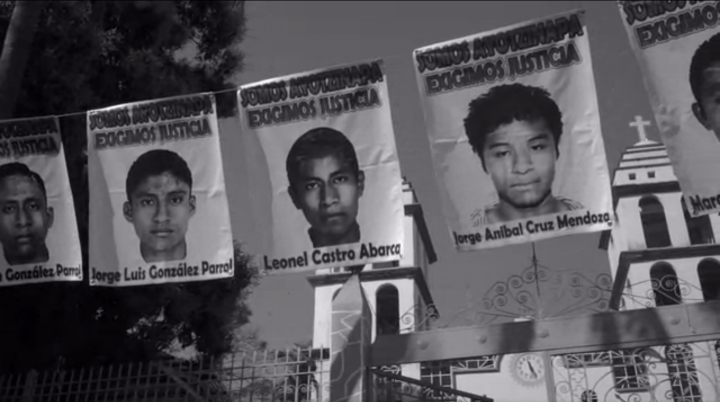‘New Yorker’ Mag Remembers Ayotzinapa’s Missing Students in Short Film

It may seem like tensions have subsided since the height of the massive social unrest that exploded throughout Mexico last fall, but looks are often deceiving. From October through December, the cause of the 43 missing students from the Escuela Normal Rural de Ayotzinapa in Guerrero state, along with broader issues of impunity, generalized corruption and government incompetence inspired massive demonstrations, impassioned outcry and even violence on the part of law enforcement and protesters alike. Yet as the holidays approached, it appeared that momentum was subsiding, and that what many considered the largest social movement in Mexico since the late 60s would amount to little more than another brief flash in a long and seemingly fruitless tradition of protest and outcry in the country.

But while the movement has ostensibly lost energy, it is still very much alive, and anger on the streets still palpable. This past March 26 marked the six-month anniversary of the atrocity and once again protestors filled the streets of Mexico City to demand accountability from the Mexican government, and while American media showed a disheartening lack of interest in the wake of the tragedy, The New Yorker has published a moving short film commemorating the six months that have passed since the news first shook Mexico to the core.

Shot and directed by photographer Matt Black, Guerrero: The Monster in the Mountains is an audiovisual continuation of his powerful black-and-white photo essay “The People of the Clouds”, a multi-year project documenting the daily lives of the impoverished indigenous residents of Guerrero that predated last year’s devastating events. Incorporating powerful audio testimony, black-and-white video and still photographs, The Monster in the Mountains contextualizes the violence and poverty endemic to the region, showing the Ayotzinapa massacre as the horrific outgrowth of a seemingly immutable state of affairs, where 70% of the state lives in poverty and corruption reigns supreme.

The images are disturbing as they are heart wrenching: a body hanging lifeless from a tree, mass graves revealing fragments of bones and skulls, vigilante community groups rising up in arms — all set against the spectacular landscapes of Guerrero’s tropical mountains. In one particularly revealing audio fragment, an interviewee concisely sums up his vision of life in Guerrero: “It’s an unfair fight between the giant of the repressive state and the poor people.” But rather than merely lamenting the intractable war lived day after day by the residents of this region, Black ends on a positive note as his interviewee continues: “But that doesn’t mean we’re hostages of pessimism. On the contrary, we are among the regions where hope flowers.”